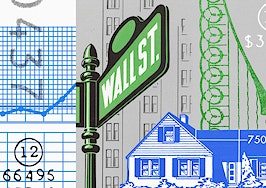This report is available exclusively to subscribers of Inman Intel, a data and research arm of Inman offering deep insights and market intelligence on the business of residential real estate and proptech. Subscribe today.
Yields on a key barometer for mortgage rates soared to a new 2023 high Monday after Federal Reserve Governor Michelle Bowman warned bankers that she thinks the Fed may need to hike rates more than once and keep them high next year to get inflation under control.
Bowman told bankers attending a management conference in Canada that while “there has been considerable progress on lowering inflation,” she continues to expect that “further rate increases will likely be needed to return inflation to 2 percent in a timely way.”
10-year Treasury yields hit new 2023 high

Yields on 10-year Treasury notes, a barometer for mortgage rates, are up 1.4 percentage points since Apr. 2. Source: Yahoo Finance.
Yields on 10-year Treasurys jumped more than 11 basis points Monday to levels not seen since Oct. 2007, briefly touching 4.70 percent before retreating to 4.68 percent.
“Inflation continues to be too high, and I expect it will likely be appropriate for the [Federal Open Market Committee] to raise rates further and hold them at a restrictive level for some time to return inflation to our 2 percent goal in a timely way,” Bowman said. “Most recently, the latest inflation reading based on the personal consumption expenditure (PCE) index showed that overall inflation rose, responding in part to higher oil prices. I see a continued risk that high energy prices could reverse some of the progress we have seen on inflation in recent months.”
Other factors that could also be driving bond yields higher Monday included Congress reaching a last-minute short-term deal to avert a government shutdown over the weekend and a report from the Institute for Supply Management showing employment and production expanded in September.
Bowman the outlier on ‘dot plot’?

Source: Federal Reserve Summary of Economic Projections, Sept. 20, 2023.
Bowman’s comments sparked Bloomberg to speculate that she may be the lone Fed policymaker who thinks the central bank will have to raise the federal funds rate to 6.0 percent to 6.25 percent and hold it there until the end of next year — an outlier on the so-called “dot plot” published in the Fed’s latest Summary of Economic Projections.
Fed policymakers voted unanimously on Sept. 20 to keep the central bank’s target for the short-term federal funds rate at 5.25 to 5.5 percent, and the dot plot shows most members of the Federal Open Market Committee expect to implement one more interest rate hike this year, which would bring the federal funds rate to 5.5 to 5.75 percent.
Looking ahead to 2024, the dot plot shows most Fed policymakers expect they’ll be able to bring short-term rates down to about 5 percent by the end of the year. However, two members of the Federal Open Market Committee think the federal funds rate will be higher at the end of next year than today.
A Trump appointee, Bowman is considered one of the Fed’s most hawkish members on inflation, along with Cleveland Fed President Loretta Mester and Governor Chris Waller. But like Fed Chair Jerome Powell — also considered an inflation hawk — Bowman says her future decisions will be based on data.
“It is important to note that monetary policy is not on a pre-set course,” Bowman said Monday. “My colleagues and I will make our decisions based on the incoming data and its implications for the economic outlook.”
Bowman made similar, “startlingly hawkish” statements on Sept. 22 in remarks to the Independent Community Bankers of Colorado, economists at Pantheon Macroeconomics noted in their latest U.S. Economic Monitor report to clients.
Chicago Fed President Austan Goolsbee, rated by Reuters as “moderate” in his views on inflation, presented a “useful counterpoint” to Bowman’s views in a recent policy speech, Pantheon economists said.
Speaking at the Peterson Institute for International Economics on Sept. 28, Goolsbee argued that the most important factors driving inflation were COVID-related, and that relying on current growth and labor market conditions as the primary predictors of whether inflation is returning to target “comes with the serious risk of a near-term policy error.”
Mortgage rates at 2-decade highs
The Optimal Blue Mortgage Market indices, which were launched in 2017, show rates on 30-year fixed-rate conforming loans hitting a new high of 7.43 percent Thursday.
Freddie Mac’s rate surveys, which date back to 1971, show rates for 30-year fixed-rate conforming loans averaged 7.31 percent during the week ending Sept. 27, the highest level in 23 years.
“The 30-year fixed-rate mortgage has hit the highest level since the year 2000,” Freddie Mac Chief Economist Sam Khater said in a statement last week. “However, unlike the turn of the millennium, house prices today are rising alongside mortgage rates, primarily due to low inventory. These headwinds are causing both buyers and sellers to hold out for better circumstances.”
Get Inman’s Mortgage Brief Newsletter delivered right to your inbox. A weekly roundup of all the biggest news in the world of mortgages and closings delivered every Wednesday. Click here to subscribe.













